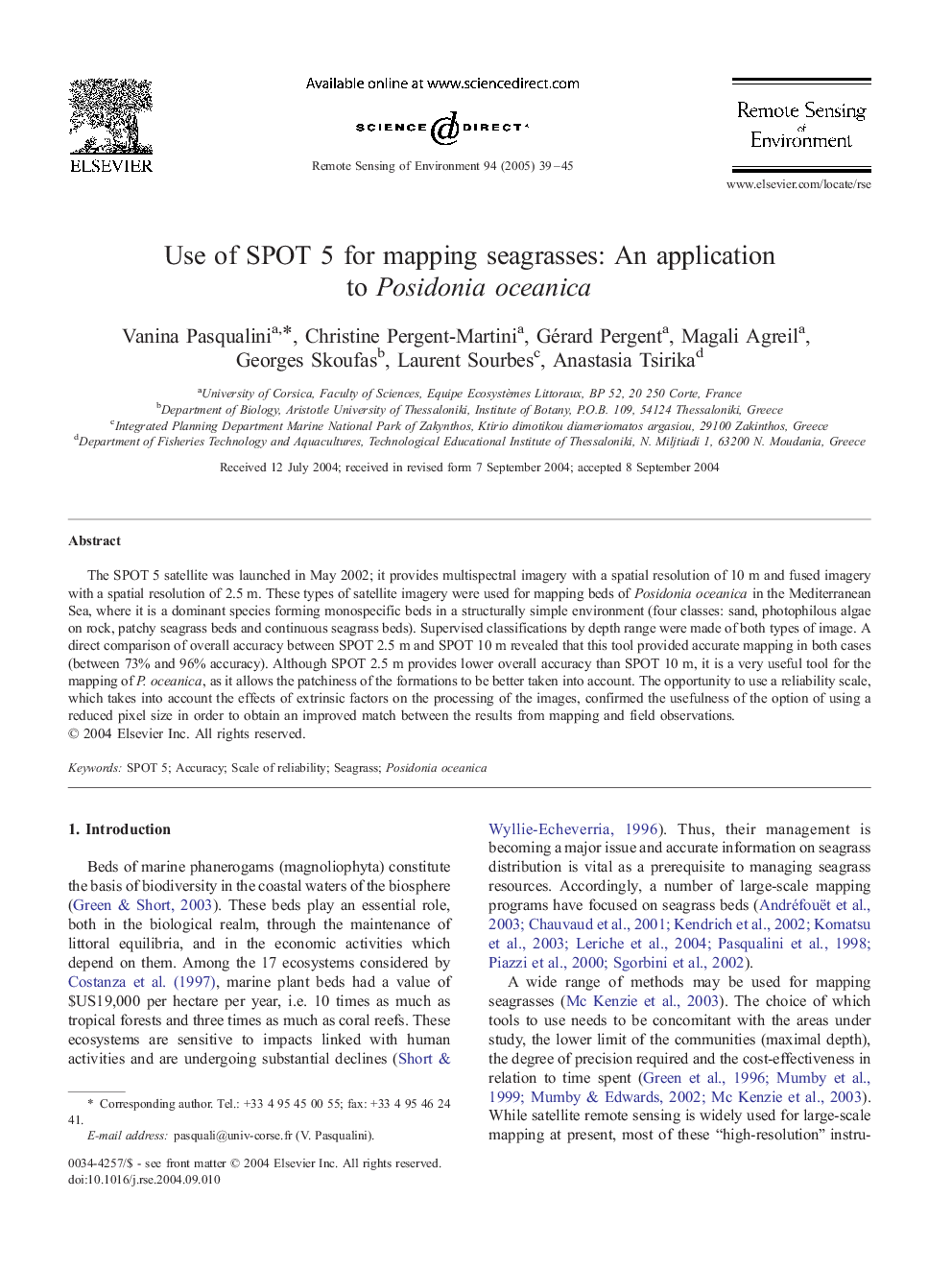| Article ID | Journal | Published Year | Pages | File Type |
|---|---|---|---|---|
| 10114363 | Remote Sensing of Environment | 2005 | 7 Pages |
Abstract
The SPOT 5 satellite was launched in May 2002; it provides multispectral imagery with a spatial resolution of 10 m and fused imagery with a spatial resolution of 2.5 m. These types of satellite imagery were used for mapping beds of Posidonia oceanica in the Mediterranean Sea, where it is a dominant species forming monospecific beds in a structurally simple environment (four classes: sand, photophilous algae on rock, patchy seagrass beds and continuous seagrass beds). Supervised classifications by depth range were made of both types of image. A direct comparison of overall accuracy between SPOT 2.5 m and SPOT 10 m revealed that this tool provided accurate mapping in both cases (between 73 and 96% accuracy). Although SPOT 2.5 m provides lower overall accuracy than SPOT 10 m, it is a very useful tool for the mapping of P. oceanica, as it allows the patchiness of the formations to be better taken into account. The opportunity to use a reliability scale, which takes into account the effects of extrinsic factors on the processing of the images, confirmed the usefulness of the option of using a reduced pixel size in order to obtain an improved match between the results from mapping and field observations.
Related Topics
Physical Sciences and Engineering
Earth and Planetary Sciences
Computers in Earth Sciences
Authors
Vanina Pasqualini, Christine Pergent-Martini, Gérard Pergent, Magali Agreil, Georges Skoufas, Laurent Sourbes, Anastasia Tsirika,
